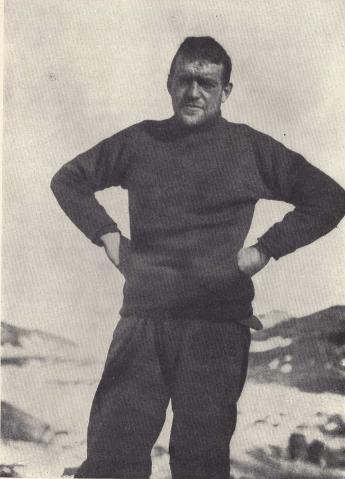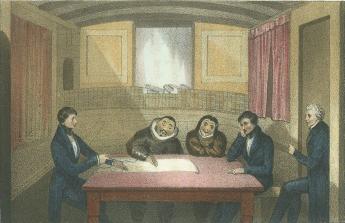Tip The Australian and New Zealand Association of Antiquarian Booksellers
Collecting Antarctica

Gaston Renard Fine and Rare Books
Background
Antarctica was the last continent to be discovered and explored, although its existence had been conjectured from ancient times. Captain James Cook was possibly the first to sight Antarctica, on his second voyage with the ships Resolution and Adventure in 1774, but the first recorded landing on the continent did not occur until over 120 years later, on Borchgrevink's British Antarctic Expedition. Captain Scott's two expeditions, and those of Shackleton, Amundsen, Mawson and others, soon followed in the early twentieth century and the spaces on the map were gradually filled in, and scientific work done, in the succeeding decades. Nowadays, Antarctic research is important for the study of climate change and other global geological and meteorological phenomena.
Range
Captain Cook's voyage forms a convenient starting point for an Antarctic collection but, if your pocket permits, a collection starting with the earliest voyages probing towards the south can be exciting and full of interest. After Cook there were several major voyages - such as those of Weddell, Ross, Bellingshausen and Wilkes - as well as whaling and sealing ventures. Many of the early voyages (including Cook's) have been published in facsimile or in modern editions, so it is possible to make a representative collection without breaking the bank. The later voyages, towards the end of the nineteenth century - the beginning of the socalled "heroic era" - were issued in highly attractive publisher's bindings of cloth decorated in gilt and colours. The fortunate coincidence in time of the beginning of Antarctic exploration and the rise of photography as a medium for illustrating publications makes for a variety of interesting and well illustrated books.
Availability
Many antiquarian booksellers stock early voyages from James Cook onwards, and the later voyages and land explorations are also readily available from many dealers. Modern books giving a history and overview of the field are fairly common and a perusal of the list of references or bibliography in two or three of these will give the collector a good starting point for a collection.
Price
The earliest books and the rarer accounts of Cook's voyage can cost many thousands of dollars. Happily, however, the texts of many are available in facsimile or other modern editions at a modest cost of tens to hundreds of dollars. Original editions from the "heroic period" may be had for a few hundred to a few thousand dollars, and a few very special limited editions are available for a few tens of thousands. Aurora Australis, the first book printed in the Antarctic and surviving in fewer than 100 copies, fetches up to $100,000.
Footnote
Recommended references include Spence's Antarctic Miscellany (a very useful and comprehensive checklist, approx. cost $120) and Rosove's excellent Antarctica 1772-1922 which contains detailed bibliographical descriptions of all the important and many lesser books from the time of Cook to the end of the "heroic era" (about $350). For a list of all expeditions towards Antarctica, Headland's Chronological List of Antarctic Expeditions (about $500) is unsurpassed.
The article by Gaston Renard Fine Books was first published in the “ANZAAB Aspects of Book Collecting” on www.anzaab.com, and is presented here, with our thanks, by permission of the ANZAAB.


